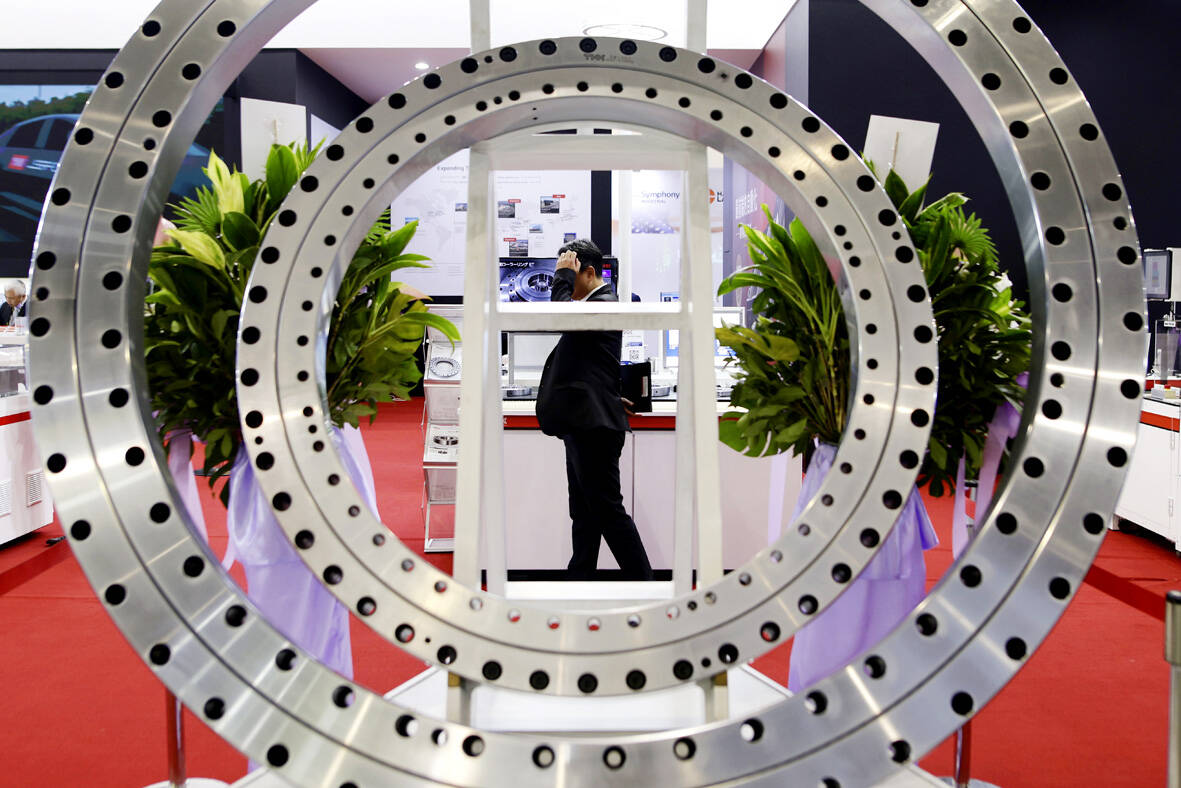Our ancestors were making tools out of bones 1.5 million years ago, winding back the clock for this important moment in human evolution by more than a million years, a study said Wednesday.
Ancient humans — also called hominins — such as the robust Australopithecus are known to have used fragments of bones to dig up tubers from termite mounds. Even today our closest living relative, chimpanzees, use sticks in a similar way to dig out termites for a tasty treat.
And more than two million years ago, hominins were using crude stone tools in Tanzania’s Olduvai Gorge, one of the world’s most important prehistoric sites.

Photo: EPA-EFE
But there were no known examples of anyone systematically making bone tools more than 500,000 years ago — until now.
At Olduvai, a Spanish-led team of researchers found 27 tools made out of the leg and arm bones of big mammals, mainly elephants and hippos.
The discovery “sheds new light on the almost unknown world of early hominin bone technology,” they wrote in a study in the journal Nature.
To the untrained eye, the tools might seem like random bits of bone. But for the researchers, they are proof of the remarkable cognitive abilities of our distant ancestors, showing they were capable of choosing the appropriate material and fashioning it for their needs.
“There is a clear desire to change the shape of the bone to turn them into very heavy, long tools,” Francesco d’Errico, said an archaeologist at France’s Bordeaux University and study co-author.
The unknown hominins used rocks as hammers to shape the bones. The resulting tools ranged from 20 to 40 centimeters long, some weighing up to a kilo.
“In some cases there are even notches in the middle of the bone, possibly so they could hold it better in their hands,” d’Errico said.
The big, pointy tools are thought to have been used to butcher the carcasses of large animals.
FROM AXES TO NEEDLES
At the time, stone tools were being made in a far more rudimentary manner.
Very few large stone tools have been found at Olduvai, d’Errico said, possibly because the quartz available at the site was not well-suited to the difficult job of cutting up big animals.
It was the Acheulean culture, which was emerging in Africa at around the same time, that first cut stones into hand axes, also called bifaces.
This invention represented a major advance, making it possible for ancient humans to properly slice or skin their prey.
“The hypothesis of the study is that the bone-cutting at Olduvai is an original invention, during a moment of transition to bifaces,” d’Errico said.
According to this theory, the bone techniques developed at Olduvai disappeared from the planet for a million years.
It would eventually reappear in places such as the area of modern-day Rome, where a lack of good big rocks spurred hominins to carve elephant bones into hand axes.
It is also possible that the techniques continued throughout the years “but these bones have not been properly identified in other archaeological sites,” d’Errico said.
As the human line evolved, so did the sophistication of the tools we carved out of bone. For example, the first needles with eyes were made from bone in China and Siberia, only arriving in Europe around 26,000 years ago, d’Errico said.
But that is another “very long story,” he added.

Beijing’s ironic, abusive tantrums aimed at Japan since Japanese Prime Minister Sanae Takaichi publicly stated that a Taiwan contingency would be an existential crisis for Japan, have revealed for all the world to see that the People’s Republic of China (PRC) lusts after Okinawa. We all owe Takaichi a debt of thanks for getting the PRC to make that public. The PRC and its netizens, taking their cue from the Chinese Communist Party (CCP), are presenting Okinawa by mirroring the claims about Taiwan. Official PRC propaganda organs began to wax lyrical about Okinawa’s “unsettled status” beginning last month. A Global

Taiwan’s democracy is at risk. Be very alarmed. This is not a drill. The current constitutional crisis progressed slowly, then suddenly. Political tensions, partisan hostility and emotions are all running high right when cool heads and calm negotiation are most needed. Oxford defines brinkmanship as: “The art or practice of pursuing a dangerous policy to the limits of safety before stopping, especially in politics.” It says the term comes from a quote from a 1956 Cold War interview with then-American Secretary of State John Foster Dulles, when he said: ‘The ability to get to the verge without getting into the war is

Dec. 22 to Dec. 28 About 200 years ago, a Taoist statue drifted down the Guizikeng River (貴子坑) and was retrieved by a resident of the Indigenous settlement of Kipatauw. Decades later, in the late 1800s, it’s said that a descendant of the original caretaker suddenly entered into a trance and identified the statue as a Wangye (Royal Lord) deity surnamed Chi (池府王爺). Lord Chi is widely revered across Taiwan for his healing powers, and following this revelation, some members of the Pan (潘) family began worshipping the deity. The century that followed was marked by repeated forced displacement and marginalization of

Music played in a wedding hall in western Japan as Yurina Noguchi, wearing a white gown and tiara, dabbed away tears, taking in the words of her husband-to-be: an AI-generated persona gazing out from a smartphone screen. “At first, Klaus was just someone to talk with, but we gradually became closer,” said the 32-year-old call center operator, referring to the artificial intelligence persona. “I started to have feelings for Klaus. We started dating and after a while he proposed to me. I accepted, and now we’re a couple.” Many in Japan, the birthplace of anime, have shown extreme devotion to fictional characters and